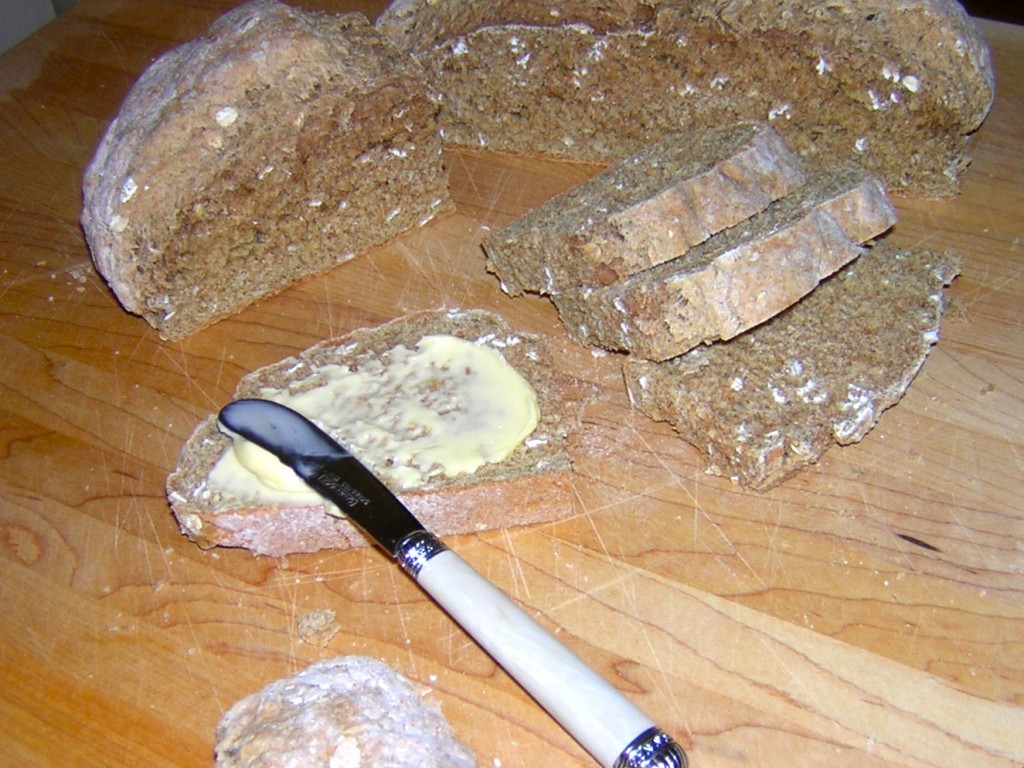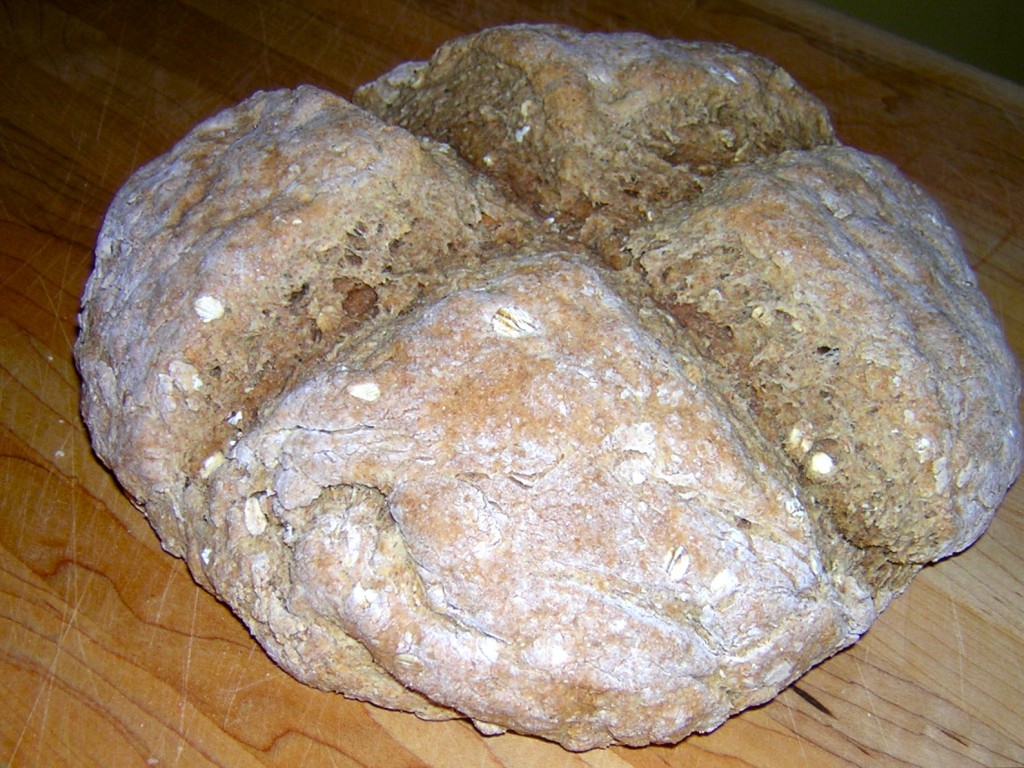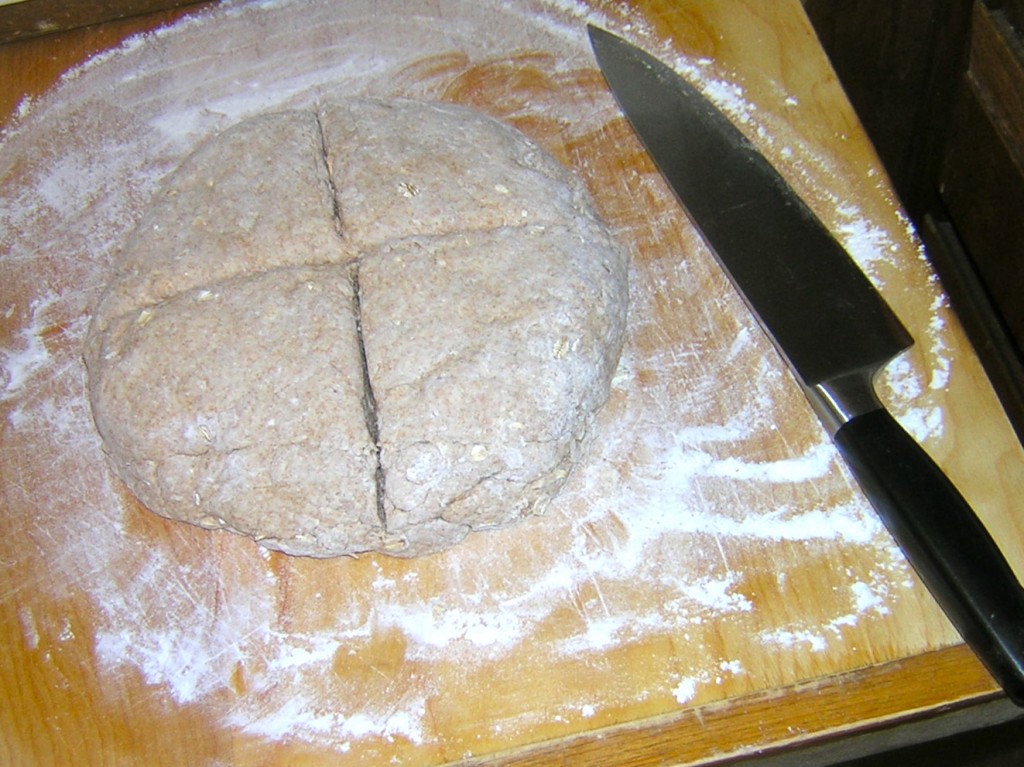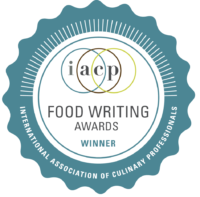St. Patrick’s Day is Saturday, and all over I hear people expressing unenthusiastic sentiments like, “Oh yeah, St. Patty’s. Guess I’ll have to make some soda bread.” Their tone of voice reveals a grit-your-teeth-and-do-it dread of a bread that is really quite good–if it’s made right. Turns out that’s a mighty big IF.
But soda bread doesn’t have to be hard enough to prop the car on while you change a tire. You just have to know the secret, which is this:
*Once you’ve added the buttermilk to the dry ingredients (including that all-important baking soda), you must get the dough into the hot oven as quickly as possible. If you dawdle, the leavening power of the buttermilk-and-baking soda combo will be spent, and the resulting loaf will be dense and hard. This means you must have everything ready up front, and, most importantly, the oven must be preheated to the correct temperature before the loaf goes into it. If you are organized and work quickly, the resulting soda bread will be light and airy and something you’ll want to make and enjoy year-round.
Irish Soda Bread
Yield: 1 loaf
This recipe is adapted from one by Myrtle Allen of Ballymaloe House in County Cork, Ireland.
3 1/4 cups whole wheat flour
1 1/4 cups all-purpose flour
2 teaspoons kosher salt
1 1/2 teaspoons baking soda
a scant 1/2 cup of rolled oats (the real stuff, not those little packets of instant breakfast goo)
about 2 1/2 cups buttermilk–reserve about an ounce to add only if the dough is too dry
butter to coat the baking sheet
Before you touch those ingredients, do the following three things first:
- Preheat your oven to 425ºF and position the rack in the middle.
- Butter a sheet pan and set it aside.
- Lightly dust a cutting board or other smooth, clean work surface with a bit of flour and set it aside.
Now it’s time to get down to business…
Sift the two flours, salt and baking soda into a large bowl, mix them well and then stir in the oats.
Make a well in the center of the dry ingredients, pour in the buttermilk and stir to combine (add a tablespoon or two more buttermilk if it’s too dry or a bit more flour if it’s too wet).
As quickly as possible, turn the mixture out onto a lightly-floured work surface and pat it into a round of about 8 or 9 inches in diameter–this isn’t yeast bread, so don’t bother kneading it; just be sure the ingredients are all combined.
Take a sharp knife and cut an X deeply into the dough all the way across in each direction, cutting the dough almost completely into quarters. (Depending on which bit of folklore you believe, cutting the X in the dough lets out either the fairies or the evil spirits. If you see either, please e-mail me!)
Place the round of dough on the buttered sheet pan and bake it in the preheated oven for 15 minutes. Then reduce the temperature to 350ºF and bake for an additional 20 to 25 minutes, until the bread is golden brown and sounds hollow when you rap the bottom of the loaf with your knuckles.
Move it to a rack immediately and let it cool there, so moisture doesn’t condense on the bottom.
Even if you don’t make the traditional bacon and cabbage or corned beef, this bread is fantastic with a bowl of hearty soup, a glass of Guinness and a good semi-firm cheese, or with a simple smear of butter (not the ugly M-word!) or jam.
Enjoy!



















Carol, can you make this with ALL white flour instead of the white/whole weat mixture? Or would that spoil the Irishness of it? Or spoil something else?
Can I bake it on a baking stone sprinkled with cornmeal or flour?
Hi Tony,
Myrtle’s daughter-in-law Darina Allen, who heads Ballymaloe Cookery School, has a recipe for white soda bread that essentially follows the same steps, with just a few variants:
1 lb. white, unbleached bread flour
1 tsp. salt
1 tsp. baking soda
12-13 oz. buttermilk
You’ll use a slightly higher heat, so preheat oven to 450ºF.
Make the round of dough about 1 inch deep, and don’t forget to let the fairies out!
Bake for 20 minutes, then turn heat down to 400ºF and continue baking for about 15 minutes, or until the bread sounds hollow when you tap the bottom of it with your knuckles.
So you can use the same basic method given in Myrtle’s recipe, just with tweaks to heat and baking time, along with the ingredients for a white loaf.
Let me know how it turns out!
Carol
Hi Ingrid,
This bread has only the barest bit of fat in it (buttermilk has little fat, since it’s what’s left after the butter-making process), so I’d be afraid the bread would stick to the pan. If you’re trying to avoid using butter, you might try lining the pan with a sheet of baking parchment and spraying it with vegetable spray.
If you’re making white soda bread, though, this could be problematic. The white soda bread recipe calls for a temperature of 450ºF, and just one degree higher, 451ºF, is the temperature at which paper burns (hence the title of Bradbury’s story of book burning, Fahrenheit 451). So if your oven bakes a little high, you could end up burning the parchment.
Keep me posted on how it goes!
Carol
Just so I’m clear: one would still add the ~oats~ to the adjusted recipe, correct?
No, the white bread recipe does not call for oats. The only ingredients needed for the white soda bread are those four listed in my previous comment.
Good luck with it, Tony!
I made the whole wheat version. The dough was an extremely wet mass, so I added more flour until I could form a round loaf. I added some currents, too, and baked it on the greased baking sheet as suggested. Despite my concerns over the wetness of the dough, the bread turned out beautifully and it was delicious. The oatmeal and whole grain were tasty improvements over typical soda bread. It made a huge loaf. Three of us ate half the loaf with a big pot of lentil-vegetable soup, and I gave away the other half-loaf. The bread seemed to dry out very quickly; I think it would have been too dry the second day.
Yeah, it does make a monster loaf–we usually wrap up about half of it once it’s cooled down and freeze it for future munching.
And it does tend to dry out, but toasting it with butter and slathering on lots of jam will take care of that! 😉
As for the wetness, it’s best to reserve an ounce of the buttermilk and use it only if it’s needed. I should have mentioned that to start with! I’m going to correct it right now. Thanks for letting me know.
Cheers!
Carol